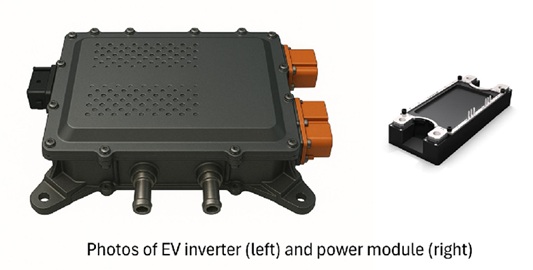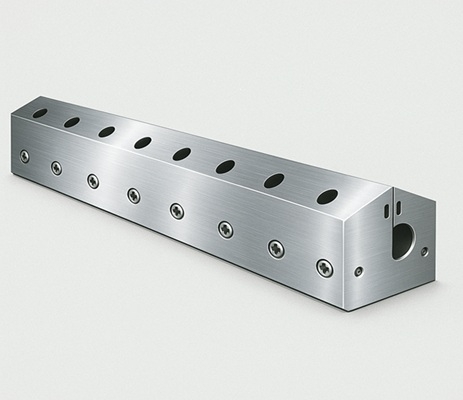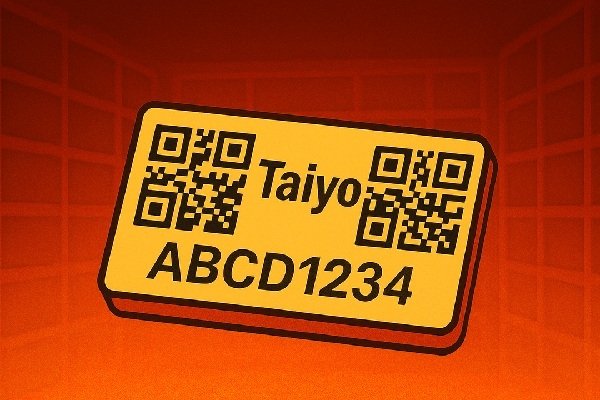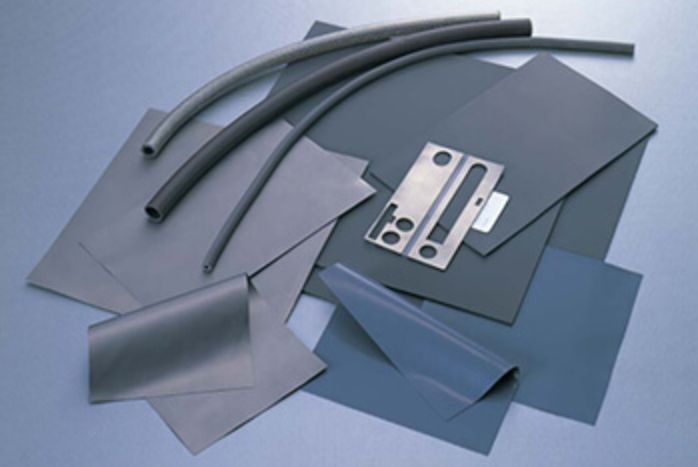
- Radio wave absorber MICROSOBER® for a clean electromagnetic environment
- Radio wave absorber mechanisms
- Two types of MICROSOBER® radio wave absorption principles
- Far field resonant type radio wave absorber (reflection attenuation type): SIW Series
- Near field suppression type radio wave absorber (interference/resonance suppression type)
- More applications of radio wave absorber MICROSOBER®
- Stable use of radio waves in clean electromagnetic environments
Radio wave absorber MICROSOBER® for a clean electromagnetic environment

In modern life, radio waves are used in a variety of devices and are indispensable. Cell phones, wireless LAN, contactless IC card readers, GPS, ETC systems, in-vehicle radar, and many other devices that utilize radio waves (electromagnetic waves with a frequency of 3 THz or lower) are all around us.
When utilizing radio waves, a clean electromagnetic environment is necessary. For example, in addition to direct radio waves from antennas, radio waves reflected off walls and other objects may reach us, causing interference and preventing us from receiving them properly. In other cases, other electronic parts may malfunction due to the influence of parts that emit strong electromagnetic waves, such as CPUs in PCs or the motors in drive units. When using radio waves, it is very important to have materials that can properly shield and absorb unwanted radiation and noise caused by electromagnetic waves from other devices.
The radio wave absorber MICROSOBER® provides a clean electromagnetic environment in a variety of situations, from small electronic devices to building structures.
Radio wave absorber mechanisms
There are several possible mechanisms for radio wave absorption by radio wave absorbers. The main ones are listed below. One or a combination of these mechanisms is used when it is necessary to absorb radio waves.
Reflection loss
Waves have the property of canceling each other out due to phase shift. This property is used in radio wave absorption by reflection loss. Radio waves propagating in the air are reflected when they hit a reflective material such as metal. Placing a material of arbitrary thickness (dielectric or magnetic) with an arbitrary dielectric constant and magnetic permeability in front of the reflective material generates a reflected wave at the boundary between the air and the material, and a reflected wave generated when propagating through the material to the metal. The two reflected waves cancel each other due to phase differences, resulting in attenuation and radio wave absorption.
In radio wave absorption by reflection loss, the phase shift of the radio wave varies depending on the wavelength (frequency) and the distance within the material (thickness of the material), so it is used for radio wave absorption in a relatively narrow band where the operating frequency is fixed.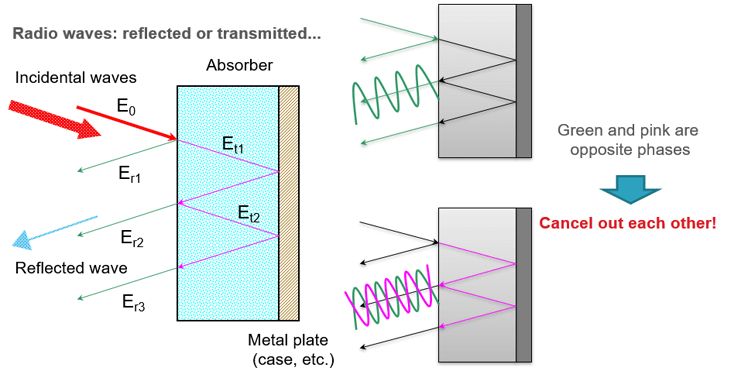
Magnetic loss
In radio wave absorption by dielectric loss, energy is lost by heat generated inside a dielectric due to changes in the electric field, resulting in the absorption of radio waves. Radio wave absorbers that use dielectric loss are made by mixing conductive particles such as carbon into an insulator such as rubber or foam, which increases the thickness and shape.
*No products in the MICROSORBER® lineup of radio wave absorbers use dielectric loss. They are described here as one of the radio wave absorption mechanisms.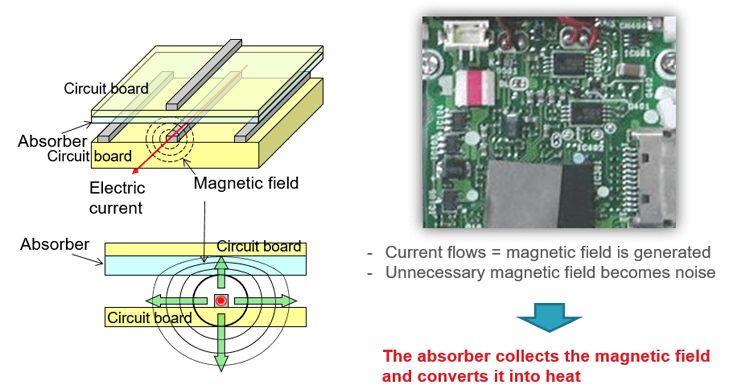
Dielectric loss
In radio wave absorption by dielectric loss, energy is lost by heat generated inside a dielectric due to changes in the electric field, resulting in the absorption of radio waves. Radio wave absorbers that use dielectric loss are made by mixing conductive particles such as carbon into an insulator such as rubber or foam, which increases the thickness and shape.
*No products in the MICROSORBER® lineup of radio wave absorbers use dielectric loss. They are described here as one of the radio wave absorption mechanisms.
Two types of MICROSOBER® radio wave absorption principles
Radio wave absorber MICROSOBER® is available with different noise elimination principles: far field resonant type radio wave absorber (reflection attenuation type) and near field suppression type radio wave absorber (interference/resonance suppression type). Both types can be applied by simply peeling off the sticker on the back of the sheet to absorb disturbing radio waves, such as radiated noise in the GHz band, to create clean circuits.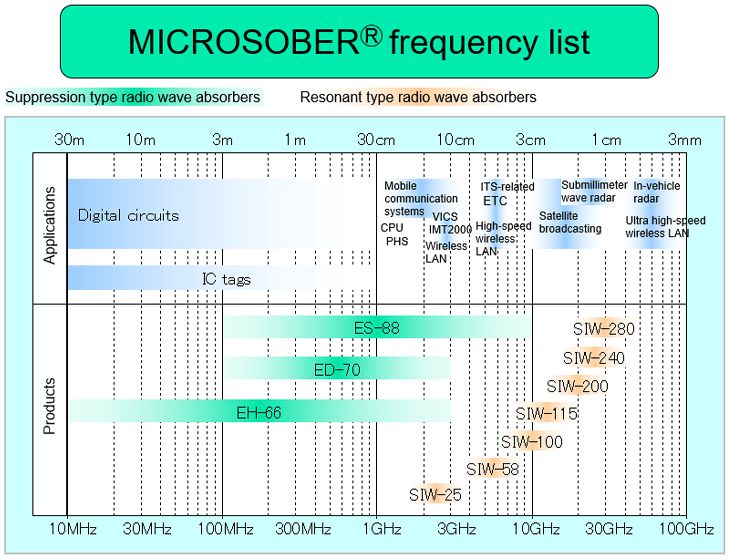
Far field resonant type radio wave absorber (reflection attenuation type): SIW Series
The radio wave absorber MICROSOBER® SIW Series are radio wave absorbers that use the principle of reflection loss. Additionally, by adding magnetic properties to the absorbers, the effect of magnetic loss enhances the effectiveness of the radio wave absorption and makes the absorbers thinner. By attaching these absorbers, the reflection of radio waves of any frequency (wavelength) is attenuated.
These are sheet-type radio wave absorbers that can be used to absorb specific frequencies, from reducing unwanted radiation in small converters to suppressing reflection from structures. They can be used in applications such as in-vehicle radar and ETC gates, where radio waves in a specific frequency band are transmitted and received at a distance. They are flexible for easy handling, flame-retardant (UL94V-0 certified), and RoHS compliant.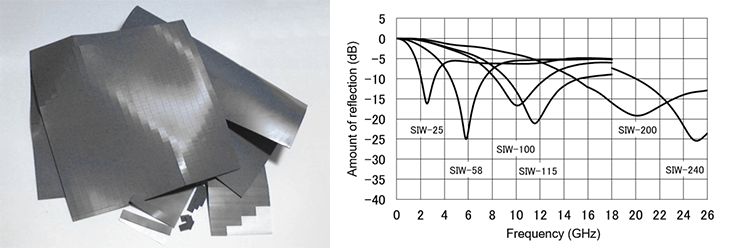
Near field suppression type radio wave absorber (interference/resonance suppression type)
The radio wave absorber MICROSOBER® ES-88, ED-70, and EH-66 Series are radio wave absorbers that use the principle of magnetic loss. Circuits such as wiring and electronic components generate magnetic fields when electric current flows through them, causing resonance and interference noise in other circuits. By attaching a radio wave absorber to a circuit that generates a magnetic field, the magnetic field is collected and converted into heat, thereby suppressing interference and resonance.
These absorbers are sheet-type and flexible for easy handling, and are RoHS and halogen-free compliant. They are used in cell phones, mobile electronic devices, PCs, game consoles, etc.
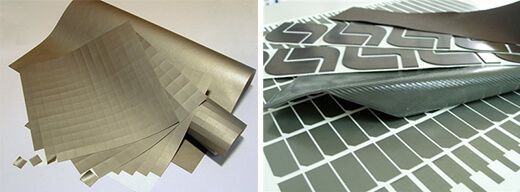
More applications of radio wave absorber MICROSOBER®
Radio wave absorber MICROSOBER® can be widely used in various devices that use radio waves and electronic equipment that requires noise suppression. We can also provide interference and noise countermeasures for various devices according to their frequency bands, such as products for next-generation high-speed communication devices that use higher frequency radio waves and products for wireless communication devices using RFID tags.
Applications for 5G base stations
In 5G (3.7 GHz, 4.5 GHz, 28 GHz) base stations, there are antennas and transmitting/receiving devices, and the area around the antennas requires measures against unwanted radiation and improvement of directivity, while transmitting/receiving devices may require measures against unwanted radiation and noise. Depending on the application and frequency, reflection attenuation type and interference/resonance suppression type radio wave absorbers can be used.
RFID applications
Ferrite, for example, has the property that its magnetic permeability decreases in a certain frequency band and increases in another particular band, resulting in smaller electromagnetic loss, which makes it easier for radio waves to pass through. This property is sometimes used in magnetic sheet materials that make it easier for radio waves to pass through to prevent the influence on communication caused by the reflection of radio waves by metal, etc.
The 13.56 MHz band RFID system is sensitive to metal, and the presence of metal in the vicinity of the R/W and tag cancels out the power required for communication and the magnetic flux carrying the signal. This significantly reduces the communication distance. In addition, if the tag is directly attached to a metal object, communication will not be possible. Radio wave absorbers are a possible solution to this problem. By attaching a radio wave absorber between the tag and the metal, the magnetic flux flows from the inside of the sheet to the outside before it is affected by the metal, thus reducing the cancellation and restoring or improving the communication distance.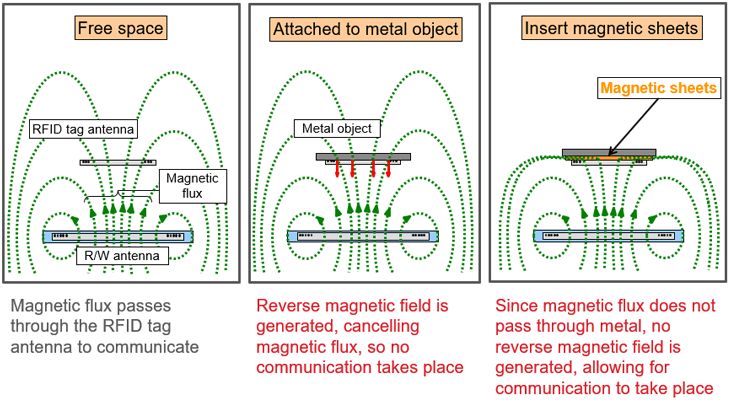
Stable use of radio waves in clean electromagnetic environments
Research has already begun on 6G, the next generation of communications, which will be even faster than 5G and use higher frequencies, from millimeter waves to terahertz waves. In addition, with the spread of IoT devices, devices equipped with wireless communication functions have become commonplace. To help ensure stable operation of these devices, countermeasures against unwanted noise may be required, and some of them may need to be improved by using radio wave absorbers. MICROSOBER® will contribute to the stable use of radio waves by providing clean electromagnetic environments for the next generation of more sophisticated communication and electronic devices in an increasingly diverse radio wave environment.
